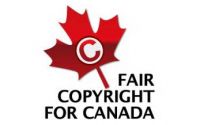Copyright in Canada

Thirty years ago, people bought music on a record….a tangible thing like any other item for sale in a store. Now, people can download information (text, music, movies, etc.) from the Internet effortlessly. This copying of information has threatened the business models of many large and powerful companies such as music labels and movie producers. And these companies have reacted to their shrinking profits by abusing copyright and suing their customers rather than changing their business models.
As a result, in today’s digital age, I believe it important that everyone advocate information freedom and become educated regarding copyright laws. In general, I encourage everyone to attend public talks regarding copyright issues (or any other topic that interests them).
On Monday, I attended a talk at the University of Waterloo by Sam Troscow entitled The Copyright Debate: Finding the Right Balance for Teaching, Research, and Cultural Expression. Sam did an amazing job, and I found that the information in this session filled many gaps in my own understanding, as well as complimented Richard Stallman’s copyright talk last year at the University of Waterloo.
Copyright involves the sole rights to reproduce a work (e.g. copy/upload) by the owner of the work (not the author of the work). Those who copy a work without the consent of the owner of the work are infringing the copyright. It is important to note that copyright protects the expression of a work and not the ideas within the work. For example, you can’t copyright a musical note such as B flat, but you can copyright a song made up of musical notes.
Sam argues that copyright often impedes teaching, innovation, and creative expression on many levels. In Canada, organizations such as Access Copyright (formerly CANCOPY….or CANTCOPY :-) charge education institutions and libraries a large amount of money that is distributed in questionable ways to copyright owners. To read periodicals/journals, a typical university pays about $4 to $5 million/year to Access Copyright.
Moreover, the Canadian definition of copyright is vague, and there is a certain amount of implied consent for copying by the owner of copyrighted work. For example, by having a Print button on a Web page, a Select All feature in a program, or access to photocopy devices, a certain amount of common use can be expected by the owner (somewhat the same as implied consent).
The most important part of Sam’s talk involved Section 29 of the Canadian Copyright Act, which examines an important exception to copyright infringement: Fair dealing.
Fair dealing (called Fair use in the U.S.) allows individuals or organizations to legally copy and use original works for criticism, review, news reporting, and private study or research.
Moreover, the court also states that the availability of a license is not relevant to deciding whether a dealing has ben fair. This means that license agreements cannot be used to negate fair use in Canada (however, license agreements can negate fair use in the U.S.!).
Better yet, the Supreme Court of Canada in 2004 clarified its position on copyright in the CCH vs LSUC case as follows: “Excessive control by holders of copyrights and other forms of intellectual property may unduly limit the ability of the public domain to incorporate and embellish creative innovation in the long-term interests of society as a whole, or create practical obstacles to proper utilization.” They also gave libraries the freedom to always claim fair use on behalf of their users in this case! This is one of those things that make me proud to be Canadian.
To read more about Fair dealing, visit http://en.wikipedia.org/wiki/Fair_dealing